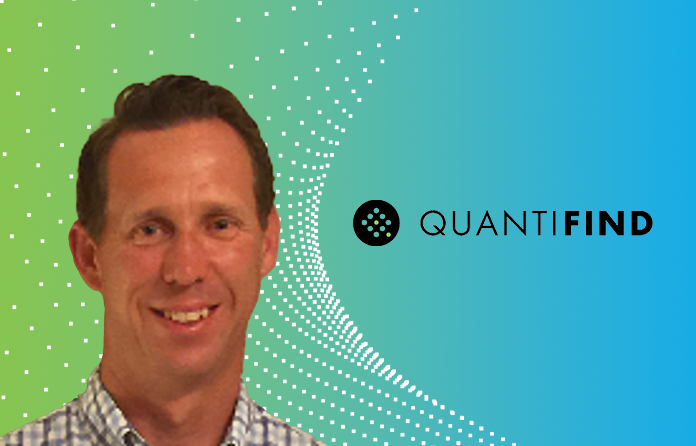Quantifind has had a busy year forming new partnerships and launching new tools. Its latest deal has seen it team up with Polaris to help tackle and prevent human trafficking incidents. Growth is on the mind of Quantifind and its new COO, Graham Bailey is ready to help bolster its market hold.?
Bailey has decades of experience in the financial sector, working in major financial institutions and startups alike. A passion for fighting financial crime took hold of Bailey after witnessing the events of 9/11 first-hand. He had been just a block away from the catastrophe in the New York office of Searchspace, a RegTech startup he helped create focused on anti-money laundering and trade surveillance. In the aftermath of the attack, the Searchspace team moved to build new tools and join the anti-money laundering fight on terror.
After the sale of Searchspace, Bailey joined Wells Fargo. During his 12 years at the company, he held numerous positions within its financial crime unit, going all the way up to its deputy Bank Secrecy Act officer. Bailey first encountered Quantifind whilst working at Wells Fargo. Bailey was so impressed by the product, he decided to join the company.?
Going from a big financial institution and to a smaller company can be quite a significant change of pace, but it was one Bailey was happy to make. One of the benefits of moving to a small business is the freedom and ability to act quickly. There is also a buzz and energy within a company like Quantifind, as they try to solve the biggest financial crime problems in the market. ?It’s great to be around people that really want to make a difference in solving the problem,he added.
It was not just the team that attracted Bailey to join Quantifind, it was also the product capabilities. ?One of the things that was most impressive about Quantifind was that it was a software company selling the exact product it had.A common scenario Bailey has experienced with technology firms is they show you a design of what the final product might look like when it is ready. The team would then need to go away and build the tool before it could be implemented. Whereas, Quantifind provides a software-as-a-service solution called ?Graphytethat lives in the cloud.? When showing the platform to clients, they see the actual service they will implement within a matter of days. There is no mystery of how the final product will look and it can do what the team claims. The tool can be seen in full operation.?
In his role of COO, Bailey helps Quantifind grow its operations within the US and globally. He described his goal as helping Quantifind ?cross the chasmto become a bigger company but retain the flexibility of a small business. ? Having gained over a decade of experience at Wells Fargo, Bailey is well-positioned to help Quantifind scale effectively. One of the things Bailey can bring with him into the COO role is a knowledge of how to interact with all types of buyers.?
?You deal with different types of buyers in the private sector. You get an ethical buyer who is running the financial crimes program of a large institution and looking to make a difference stopping bad actors. But there is also the profit element to consider, as they cant keep throwing people at the endeavour. Then there are those in the technology or operations side that are happy the solution is achieving something so positive, but also want to know if it is as efficient as possible.While Quantifind ethical AI is capable of great things, the company is able to handle the business case side of it so those worried about bottom lines can be reassured.?
The three rising elements of financial crime
Financial crime continues to plague the world and there are no signs it will stop. According to a comprehensive report on IT and operational spending in AML-KYC, Celent estimates that financial industry spending on compliance technology and operations was US$34.1 billion globally in 2020. Seeing the high costs firms are faced with, it is no wonder they are exploring RegTech solutions to counter the threats and reduce costs. While there are various facets within compliance that must be addressed, Bailey highlighted three core areas that are a priority for new solutions: know your customer/vendor (KYC), sanctions, and transaction monitoring.?
On the point of KYC, he explained there has been a rise in people wanting to know exactly who it is they are doing business with, whether this is a customer or someone in the supply chain. A core driver of this is ESG. COP26 has just concluded and world leaders have stressed the importance of fighting climate change. Regulators are increasingly drafting legislation that will require firms to operate at net-zero and minimise their impacts on the environment. The UK FCA recently outlined a potential change to investment classifications to ensure consumers have greater transparency on how the companies they invest into are impacting the climate or have unethical practices. As a result, financial institutions will need to prepare their KYC capabilities.
?People want to understand who it is they’re doing business with. Groups like the ICIJ [International Consortium of Investigative Journalists] and others are looking at financial institutions customers and supply chains. If you’re not looking at it, somebody else is going to look at it and hold you to account as a business. I think the pressure is there to do that correctly and rapidly,added Bailey.? There is a growing reputational risk associated with this and firms are in jeopardy of losing customers and trust if they fail to really understand their customers.
As for sanctions, these are still widely used by governments around the world and are getting more complex. For example, how can a firm allow transactions for certain health supplies in a country but avoid deals with sanctioned drugs? Incorrectly handling these sanctions comes with hefty financial and reputational hazards. Furthermore, there is a greater chance of other banks holding each other to account. If one bank facilitates a transaction, the other financial institutions involved in the payment could notice the issue, while the bank missed it. ?You can’t be lagging behind others in terms of the quality of your controls.span>
Finally, Bailey believes transaction monitoring needs to be broader. Traditional processes simply look at a customer transaction and see if it is suspicious. However, as Bailey explained, payments between two people for drugs is similar to someone settling up a restaurant bill with friends. A way to get a clearer understanding is through open-source intelligence, such as that from negative news. This adverse media screening gives the bank a better understanding of who the customer is. ?Leveraging that open source intelligence is going to help you make a distinction between which alert to take forward and which one to ignore, and allow those good customers to continue to transact with the bank.??
As companies try to cope with these three rising elements, Quantifind is there to help. It is no secret financial institutions are encumbered by legacy systems. If they need to implement a new solution to meet the rising demands of KYC or sanctions, it needs to be something that can adapt to their infrastructure. Bailey explained that having a solution, like Graphyte that can be up and running within a matter of days gives speed to market and is better for the bottom line. The other benefit of a solution like Graphyte is reducing manual workloads. If sanction screening brings back hundreds of pings, the RegTech platform could reduce that by as much as 75% and only highlight the important ones.?
Quantifind is well on the way to becoming a bigger company. Its recent partnership with Polaris is a sign of more things to come.??
Copyright ? 2021 FinTech Global?
?











